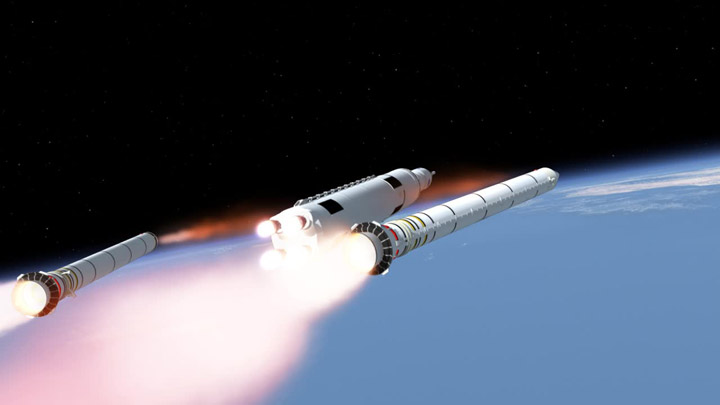Watch the video above: NASA tests the engines to power what will be the most powerful rocket in the world.

TORONTO – If we’re going to get to Mars, we’re going to need a powerful engine to get us there, and NASA has that covered.
Last week the space agency tested the engine that is designed to power the Space Launch System, or SLS, the rocket that will eventually be used to send the Orion spacecraft to a mission to Mars.
READ MORE: Orion completes first test flight in ‘flawless’ fashion
The SLS will be the world’s most powerful rocket, designed for deep space — deeper than humans have ever gone before.
There will be two versions of the rocket: one with a 77-ton lift capability, the other with a lift capability of 143 tons.
Just to compare, the 70-ton version will provide 10 per cent more thrust than the Saturn V rocket that sent Americans to the moon. The 143-ton configuration will provide 20 per cent more thrust than the Saturn V.
The RS-25 isn’t exactly a new engine: it’s actually a shuttle main engine that has been repurposed for the SLS by Aerojet Rocketdyne. They have taken 16 of these engines to use on SLS.
This was NASA’s first hot fire of the RS-25 since the end of the main shuttle engines in 2009.
“We’ve made modifications to the RS-25 to meet SLS specifications and will analyze and test a variety of conditions during the hot fire series,” said Steve Wofford, manager of the SLS Liquid Engines Office at NASA’s Marshall Space Flight Center in Huntsville, Alabama, where the SLS Program is managed.
This was the first of eight tests of the RS-25. Testing will resume in April after upgrades to the water system used at the test facility are completed.
The first flight test of the SLS is expected to take place in December 2017 using the 70-ton configuration. It will launch an uncrewed Orion capsule that will go out to the moon and return to Earth.



Comments